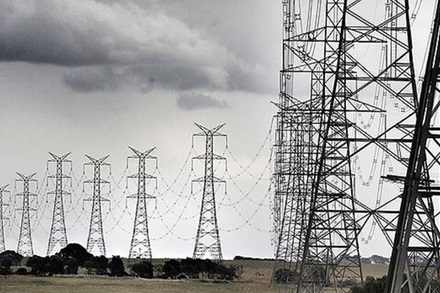Last month, Andrew Vesey, the chief executive of AGL Energy, made a frank admission. Regulations in the energy industry, he said, were not designed to protect consumers. They were put in place to protect investors.
“The consumer is the last thing in the regulator’s mind,” Vesey told the Energy Disruption conference hosted by RenewEconomy. His shareholders should be thankful. Consumers less so. And there are few signs that things will change anytime soon.
Consumer groups this week have again cried foul over yet another ruling by the main policy maker in Australia’s energy markets, describing it as yet another roadblock to a transition to a clean affordable grid, and the shift to locally generated solar, battery storage and shared energy.
The Australian Energy Markets Commission on Thursday announced it would reject a proposed rule change that would give credit to customers using less of the grid because they would share and store more of their locally generated electricity.
Proponents of local generation network credits (LGNCs), which gives value to generation produced locally, say the initiative would have saved $1 billion or more in avoided network costs.
The AEMC decision, if upheld, is likely to throw a big spanner in the ability of community groups, councils, property developers and townships to share energy that they generate on one their buildings. In effect, it protects the dominance of the energy incumbents.
Proponents of the rule change – which included numerous councils including Sydney, Byron Bay and others – were damming in their criticism of the AEMC and of the modelling it produced that claimed the new rule would add costs to consumers, not remove them.
Jay Rutovitz, from the Institute of Sustainable Futures, described the modelling and the decision as “laughable”.
She said the modelling commissioned by the AEMC was distorted by a number of factors, such as the inclusion of existing systems, and by only including solar PV and no other technologies, and wrongly assuming that the proposed rule change would apply to small solar systems.
“I don’t really understand how they have not got that. I find it staggering,” she told RenewEconomy.
A co-sponsor of the rule change, Mark Byrne from the Total Environment Centre, was also damming, saying the ruling would likely cause prosumers to reduce their use of the grid, to look at private wires and microgrids, and potentially to disconnect.
It is not the first time that the AEMC has frustrated consumer groups and new technology providers trying to break down the immense regulatory barriers that surround and protect the fossil fuel generators and other energy incumbents, such as networks and retailers.
Last year, proposed rule changes that could have reduced network bills were delayed another five years, following fierce resistance from coal generators. The proponents said the decision could mean higher bills, and more grid defections, as networks and retailers engage in a turf war over battery storage.
More efforts to encourage demand response were rejected last month, again because the AEMC ruled that the current rules were just fine.
It also delayed a response to another rule change on settlement periods – the so-called five minute rule – that could encourage battery storage and unlock the grip over market pricing current enjoyed by a cabal of gas-fired generators. Again, the fossil fuel incumbents were fierce opponents of the changes.
The glacial place of policy change has become a subject of scorn and ridicule at most energy conferences, and has emerged as an issue with state and federal energy ministers, who resolved at the recent COAG meeting to put pressure on the rule maker to act more quickly, and in the interests of consumers.
Nicky Ison, a director of the Community Power Agency, says the rule-maker needs to get with the times.
“Our energy system is rapidly modernising but the rule makers are failing to catch up. The federal energy minister and his state and territory counterparts must now step in and fix this so it is cheaper and easier for communities and local business to keep building and using more renewable energy.”
The consumer lobby group Solar Citizens described the decision as yet another lost opportunity that fails to grasp consumer demand or intent.
“It is just one more example of how our energy institutions have their faces firmly turned against the future, and are simply not responding to what consumers want – more renewables, more local energy, and more control over their power bills,” said Reece Turner.
“This rule change could have unlocked hundreds of new decentralised renewable energy projects but instead, it is another in a long line of decisions which clearly demonstrate one thing – our ageing energy institutions have failed, and continue to fail us.”
Many believe that the fact that the AEMC is able to justify such decisions is because of the National Electricity Objective, which makes no mention of any environmental outcomes in any decision on the national electricity grid.
“The AEMC ignored the environmental or social outcomes of this decision because they aren’t in the one sentence that rules them all, so are in effect hostage to that one line – it’s an absurd situation,” Turner says.
The inclusion of an environmental objective has been argued for years, but has been resisted by the incumbent industry and the regulators and rule makers because of the obvious threat to one of the most highly polluting and costly grids in the world.
Ironically, the AEMC constantly defends its role in “protecting” consumers. Its chairman John Pierce, gave a speech in UK this week where he insisted that consumers were at the centre of the policy maker’s universe.
Pierce also claimed that the NEO, as it currently stood, with its focus on efficiency and no mention of environmental outcomes, had effectively tied his hands.
“Ultimately these are government decisions. They receive advice of course but ultimately it is the government’s call to specify objectives. If officials or regulators don’t like the call my response tends to be “Well guess what sport? You get to vote just like everyone else in the country. In the meantime get on with what you are paid to do.”
But the proponents say that even without an NEO that includes environmental outcomes, the rule-maker has failed.
The irony of Pierce’s defence is that Australia might have an efficient grid, but it does not have an affordable one. Layers upon layers of regulation and complexity have conspired to exploit what was once regarded the world’s cheapest source of power and turn it into the most of expensive form of electricity delivered to consumers.
And most of this has occurred in recent years, as a consequence of numerous policy, regulatory and business decisions designed to exploit and profit from the market. Even the most ardent economic rationalist would argue that this is a stuff up of major proportions.
As Vesey told the conference, the push away from centralised generation is unstoppable (although to be fair, some groups like AGL are accused of trying to slow it down).
“It was once thought that the bigger you made some thing, the cheaper it got,” Vesey said then. That is no longer true, he said, technology is growing exponentially, but regulation and policy was only able to grow in a linear fashion. The yawning gap in between is what he defines as disruption.
Hopefully, now that there are a new group of environmental ministers in the COAG who have responsibility for both environment and energy, this can change.









